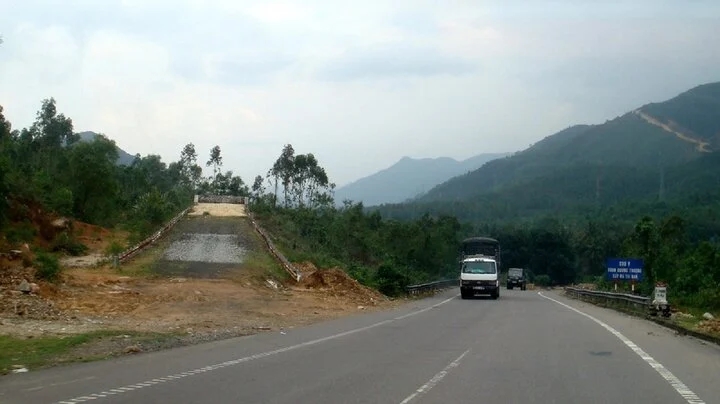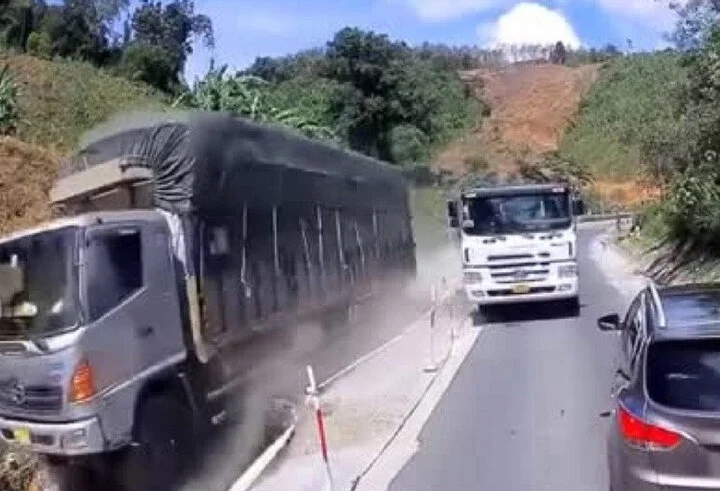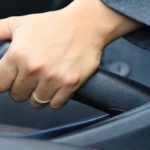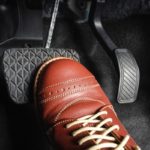Trigger Warning Lights
This is the first course of action for drivers to alert other motorists of a potential issue with their vehicle and to keep a safe distance.
Re-attempt the Brake Pedal
If the brake pedal has been pressed without response, firmly press it several times to attempt to engage the brakes, as most modern cars have a dual-brake system.

In the event of a truck losing its brakes, it is advisable to steer onto a slip road to reduce speed and minimize damage. (Illustration).
Should the brakes suddenly fail, it is possible that a component of the system is faulty. Applying strong and consistent pressure on the brake pedal may help slow down and stop the vehicle.
Engage the Handbrake
If the foot brake is unresponsive, the driver should slowly pull the emergency handbrake. If the vehicle has an emergency brake pedal, press it firmly until the car comes to a complete stop.
The emergency brake operates independently of the main brake system, so it can help bring the car to a safe stop at low speeds. However, at higher speeds, stopping the vehicle with the handbrake will take longer, requiring a calm and composed response from the driver.
It is important to note that improper use of the handbrake during an emergency can cause the vehicle to veer to one side.
Downshift to a Lower Gear
This is the most common method to stop a vehicle when brakes fail. By revving the engine and shifting to a lower gear, the vehicle’s speed can be reduced. This technique is known as engine braking.
To execute this, depress the clutch and shift to a lower gear to slow down. Once the car’s speed has noticeably decreased, engage the handbrake to bring the vehicle to a complete stop.
Move Away from Traffic
If driving on a highway, the driver should remain vigilant and aware of their surroundings, only moving the vehicle to the right lane when it is safe to do so.
During the lane change, continue to use hazard lights and sound the horn to alert other drivers on the road.
If possible, steer the vehicle into a parking lot or a safe area off the main road, avoiding stopping in the middle of the road or in locations that may pose a hazard to other vehicles.

Another option is to scrape the vehicle against a mountain wall. (Illustration)
Lower the Windows to Increase Air Resistance
While this method won’t bring the vehicle to a complete stop, it can help slow it down. Additionally, you can shout for help or use your horn to alert other drivers of your situation.
Turn onto a Slip Road or Head for a Hill
If possible, look for a road that leads uphill or a designated escape lane on highways. If neither is available, drive towards a slope to reduce speed until the vehicle comes to a halt.
Scrape Along a Crash Barrier
As a last resort, driving the vehicle alongside a crash barrier or guardrail can help slow it down, but this will likely cause damage to the car’s body and may result in injuries to the driver due to impact.
According to VTC News
What is the safest way to brake when driving: using the front brakes, the rear brakes, or all four brakes at once?
Misusing brakes can be detrimental to the safety of passengers inside the vehicle and have serious consequences for other road users.


































